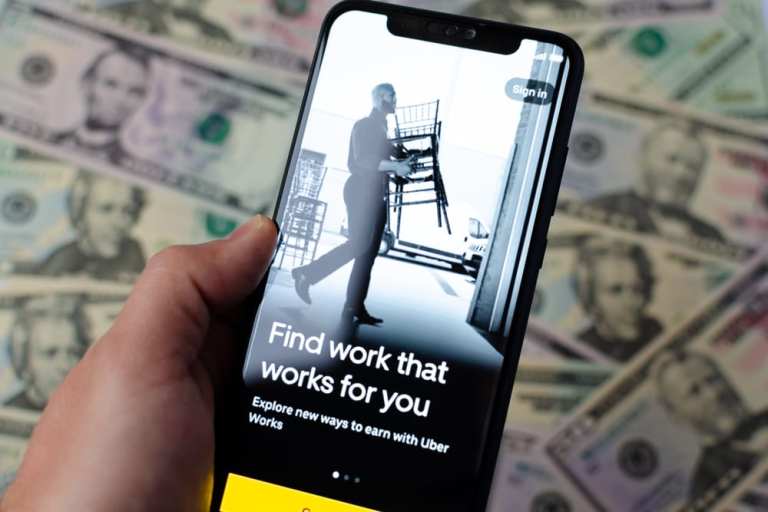The goal of the law, most agree, was to target the big names in the gig business — Uber and Lyft. Consumer protection groups advocating for the law’s passage have argued that all over the gig economy, there are workers who should be considered employees but are instead classified as independent contractors, purely so the businesses can avoid paying employee benefits.
But critics of AB5, as Karen Webster wrote in a recent commentary on the near-reflexive desire among regulators to punish Big Tech for being Big Tech, have noted that although the intention of the law might be understandable, the words of the legislators describing its purpose are not.
“It’s clear that AB5 is essentially an assault on app-based, on-demand tech companies. It is replete with exceptions for much of the traditional gig economy — for instance, it’s for people selling Tupperware part-time, but not for someone dropping off meals for a restaurant delivery app. Uber and Postmates, in fact, have filed a lawsuit in which they claim that ‘AB5 is an irrational and unconstitutional statute designed to target and stifle workers and companies in the on-demand economy…'” Karen Webster wrote in her recent commentary.
Irrational and unconstitutional — and, according to a blog post by Uber CEO Dara Khosrowshahi, also destructive to jobs and business models. Trying to fix the problem of benefits for gig workers by simply forcing a square peg into the round hole of employment as it has traditionally been defined won’t protect Uber’s drivers. Instead, it will dump a massive number of them out of their paying jobs, at the worst moment in economic history.
“Employment comes with a cost: hundreds of thousands of drivers would lose work opportunities overnight,” he wrote.
Advertisement: Scroll to Continue
Khosrowshahi believes gig workers need protection and a better deal than they are offered at present, referring back to his New York Times article written on this subject over the summer. But that means thinking differently about gig workers and how their benefits are provided.
The High Cost Of Creating Employees
While Uber denies that classifying their drivers as gig workers is part of a grand masterplan to systematically under-provide for their needs and safety, they do openly concede that independent contractors are much less expensive to retain than full-time or part-time employees. And that increased cost means that as employees, the firm would be able to retain far fewer than the 1.7 million contractor-drivers it currently employs.
“According to our research, if Uber instead employed drivers, we would have only 260,000 available full-time roles — and therefore 926,000 drivers would no longer be able to work on Uber going forward. In other words, two-thirds of people currently driving with Uber would be denied their ability to work,” wrote Khosrowshahi.
And, he noted, moving to a mix of part-time and full-time drivers doesn’t meaningfully change the math – they would still be cutting over 900,000 drivers and would only end up with about 280,000 jobs total.
Given that the economy spent much of the spring hemorrhaging jobs and that over 10 million Americans are still out of work, said Khosrowshahi, now seems like a particularly bad time to be pushing a million gig workers out of their jobs in the name of giving them protections that most don’t seem to actually want.
Helping Gig Workers To Death
As PYMNTS’ surveys have found, gig workers by and large like being gig workers — the appeal is precisely that it is not regular 9-to-5 employment. They like having the flexibility to decide when and where they will grab a few extra dollars
That goes away in a world where those workers are forcibly converted into employees, Khosrowshahi noted.
“As an employer, however, Uber would be forced to actively manage drivers’ schedules, hiring a specific number of employees based on a baseline volume of consistent business. Uber would hire fewer drivers to each do more trips, and require them to work a certain number of hours.”
By forcing Uber into an employment model, AB5 and similarly designed laws are actually forcing most of their drivers out of their jobs — and pushing the rest of them into a version of the job that a majority have explicitly reported that they don’t want.
What Can Be Made Better
Gig workers lacking benefits is a problem, Khosrowshahi wrote, and one that merits solving. But his argument states that legislating gig workers into becoming employees isn’t the right way to get there.
“Instead of eliminating opportunity for nearly a million people, we should endeavor to improve the benefits and protections for gig workers. Their success, supported by a stronger safety net, would help bolster our nation’s economy,” he wrote.
Uber’s preferred method is a Working Together proposal, which would provide funds directly to gig workers to put toward health benefits, paid time off and other needs. Under this model, the funds would have to be maintained across gig platforms, so a gig worker’s benefits would be accessible from whatever platform they use.
The fact that gig workers need benefits is increasingly a point of agreement. But the problem with trying to push gig workers into the market as employees — as Elaine Turner, a shareholder and director focused on employment law at Oklahoma-based Hall Estill, told Karen Webster in an interview earlier this year — is that it’s essentially applying a grossly out-of-date solution to a very contemporary problem.
“The laws and legal concepts that we’re talking about have been around for decades, and they have not evolved along with the U.S. economy or the ways that the workplace has changed,” she said.
At a high level, noted Turner, many individuals want to have independence and, in effect, be their own boss — something the gig economy makes possible through its flexible platform design. It’s something that was almost unheard-of in 1938, the year a large swath of legislation that governs current labor practices was crystallized in the Fair Labor Standards Act.
Funny thing about economies: They can change a lot in 80 years.
As Turner said, labor laws are still rooted in a time when the U.S. was largely an economy driven by manufacturing; nowadays, it’s primarily a service economy. Those laws haven’t kept pace, she maintained, and they must evolve.
What that evolution will look like remains to be seen, but its necessity seems pretty clear. And a solution that involves a third of gig workers trading benefits for flexibility and two-thirds losing their jobs entirely probably isn’t the most worker-friendly option.




